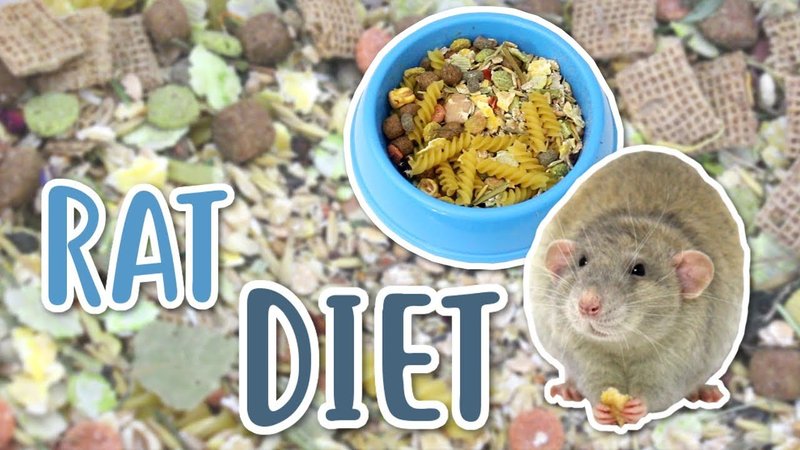
Rats are social animals, and they thrive in environments where they feel safe and loved. Think of them as the introverts of the pet world; if given the right space and care, they will blossom and bring joy to your life. In this article, we’ll dive into the essentials of rat care, including their diet, habitat needs, and how to handle them properly. By the end, you’ll be well-prepared to welcome a little rat buddy into your home!
Understanding Your Rat’s Diet
Feeding your rat the right diet is crucial for their health and happiness. Rats are omnivores, which means they eat a variety of foods. It’s like having a tiny little garbage disposal living in your home—almost everything’s fair game, but you have to choose wisely. A balanced diet includes high-quality commercial rat food, fresh fruits, and veggies. Here’s what to keep in mind:
- Commercial Rat Food: Choose a quality pellet or block designed specifically for rats. Avoid seed mixes, as they can lead to unhealthy eating habits.
- Fresh Fruits and Vegetables: Offer small amounts of fruits and veggies like carrots, apples, and leafy greens. Introducing new foods gradually can help avoid tummy troubles.
- Treats: Occasional treats like nuts, whole grains, or cooked beans can be delightful for your rat, but keep them minimal to prevent obesity.
Make sure to provide fresh water daily, too. Using a water bottle can help keep their drinking area clean. Also, be cautious about shared household foods; some human foods can be toxic to rats, like chocolate, onions, and citrus fruits.
Creating a Comfortable Habitat
Rats need a safe, comfortable space to call home. Think of their habitat like a cozy little apartment where they can explore, play, and nap. Here’s what to consider when setting up your rat’s home:
- Cage Selection: Choose a spacious, multi-level cage with narrow bar spacing. This prevents escapes and allows room for climbing and exploring. Aim for a size that offers at least 2 cubic feet of space per rat.
- Bedding: Use safe bedding materials like aspen shavings or paper-based bedding. Avoid cedar or pine shavings, as the oils can be harmful.
- Accessories: Include tunnels, hammocks, and hiding spots to keep your rat engaged. They love to burrow and explore!
Position the cage in a quiet area away from direct sunlight or drafts. Rats are social creatures and enjoy interacting with their companions, so placing their cage in a bustling part of the house allows them to feel included.
Temperature and Lighting Considerations
Keeping your rat comfortable involves more than just a well-furnished cage; temperature and lighting play key roles too. Rats thrive in temperatures between 65°F and 75°F (18°C to 24°C). You wouldn’t want to be stuck in extreme heat or cold, right? Here’s how to make their environment cozy:
- Ventilation: Ensure the cage has good airflow without being too drafty. Proper ventilation keeps your rat healthy and prevents respiratory issues.
- Lighting: Rats are nocturnal, so they naturally prefer dim lighting during the day. Consider covering the cage with a light cloth during the day and providing a more illuminated area in the evenings.
- Humidity Levels: Keep humidity moderate to avoid respiratory problems. A humidity level of 40-60% is ideal.
Being aware of these elements will help your rat feel safe, secure, and comfortable in their home.
Handling Your Rat with Care
Handling your rat may feel a bit intimidating at first, but it can really strengthen your bond. Rats are curious and can be quite friendly when handled properly. Here’s how to make the most of your interactions:
- Start Slow: Allow your rat to get used to your scent and presence before attempting to pick them up. Sit near the cage and talk softly to them, letting them approach you when they’re ready.
- Safe Handling Techniques: When you pick up your rat, support their body with both hands, ideally cradling them gently. Avoid squeezing or grabbing them by the tail, as this can cause them stress.
- Short Sessions: Keep handling sessions brief at first, gradually increasing the time as your rat becomes more comfortable. Playtime and exploration outside the cage can be fun and interactive.
Remember, patience is key! Each rat has a unique personality, so let them dictate the pace of your relationship. Some may be eager to snuggle, while others may prefer a more laid-back approach.
Socialization and Playtime
Rats are highly social creatures and thrive on interaction, both with humans and with other rats. It’s essential to give them plenty of opportunities for socialization to keep them happy and mentally stimulated. Here are some ideas for playtime:
- Companionship: Consider getting a pair of rats, as they love company. They’ll play together, groom each other, and keep each other entertained.
- Interactive Toys: Invest in toys that encourage problem-solving, like puzzle feeders or chew toys. These not only keep them busy but also promote mental health.
- Out-of-Cage Time: Designate a safe area for supervised playtime outside the cage. You can create tunnels, play with boxes, or set up an obstacle course. Just ensure it’s a secure space free from hazards!
The goal is to keep your rat engaged and encourage their natural instincts to explore and play. A happy rat is a healthy rat, and proper socialization will help build a strong bond between you.
Maintaining Good Health
Just like any pet, keeping your rat healthy requires regular care and attention. Here are some vital health tips to ensure your rat lives a long and happy life:
- Regular Vet Visits: Schedule routine check-ups with a vet familiar with small animals. They can help detect any health issues early on.
- Observe Behavior: Pay close attention to your rat’s behavior. Any sudden changes, like reduced activity or changes in eating habits, can indicate potential health problems.
- Clean Environment: Maintain a clean habitat by spot-cleaning daily and doing a thorough clean weekly. This helps prevent illness and keeps everything smelling fresh.
Being proactive about your rat’s health can make all the difference. A little extra effort now can lead to a happier, longer life for your furry friend.
In Conclusion
Caring for a standard rat can be an incredibly rewarding experience. With the right diet, a cozy habitat, gentle handling, and regular health check-ups, you can create a loving environment that allows your rat to thrive. Remember, taking the time to get to know your rat’s needs and personality will not only help them feel safe but also deepen the bond you share. Your rat isn’t just a pet; they can become a cherished member of your family. So embrace the journey ahead—your little buddy is waiting!

